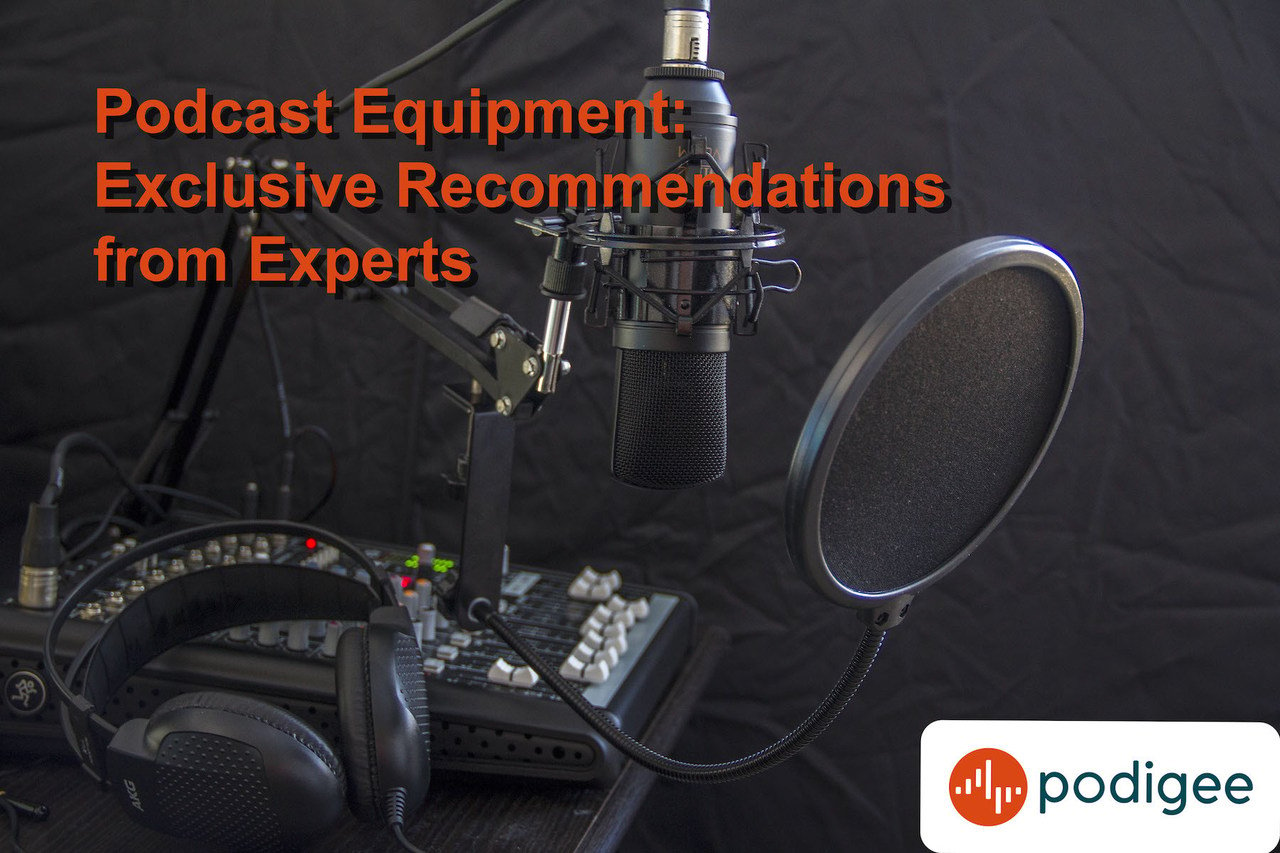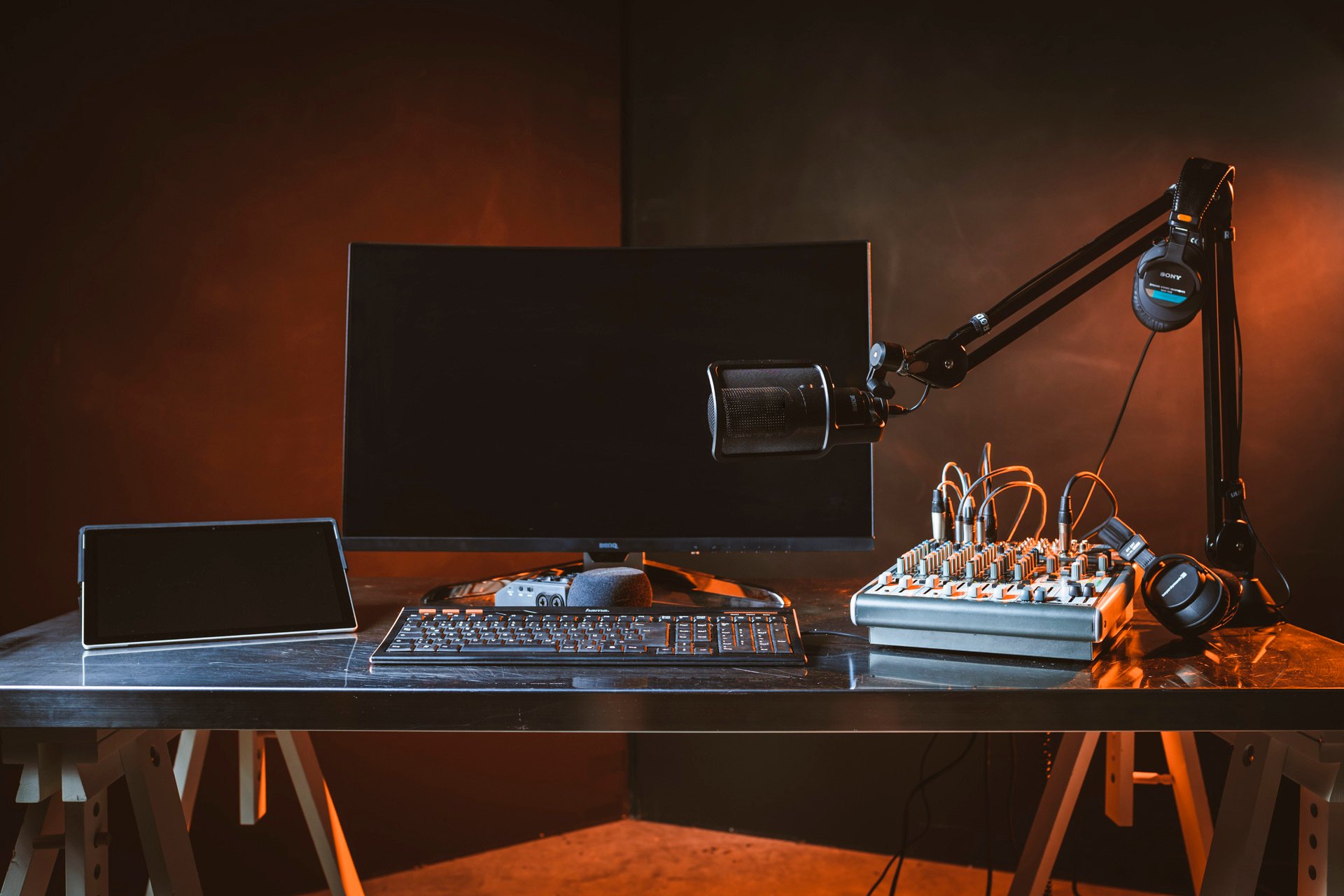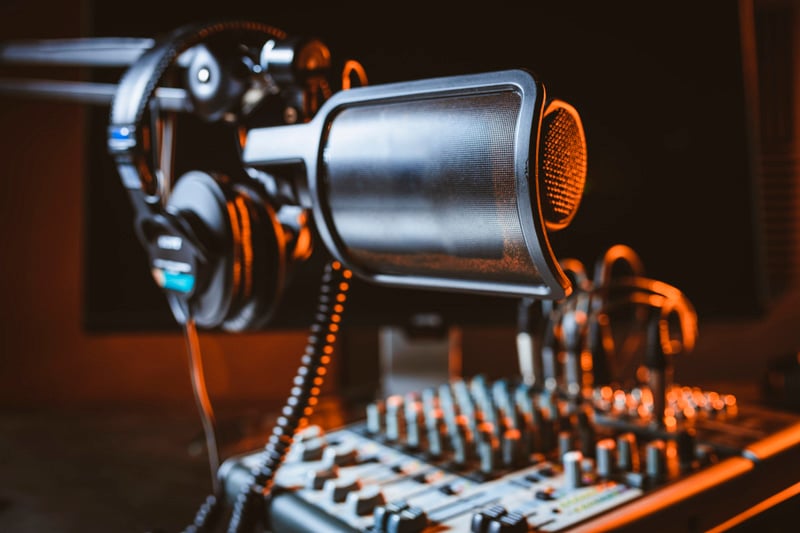How do I record a podcast?
In the series "Podcasts - everything you need to know to get started" we take a closer look at different aspects of podcasting. Part 3 is about...
If you want to start podcasting, sooner or later you have to deal with the technology behind it. The right equipment is ...
If you want to start podcasting, sooner or later you have to deal with the technology behind it. The right equipment is the basis of every quality podcast and ensures a pleasant introduction to the world of audio. Before you dive into the floods of Google research - just let three industry professionals recommend their favourite starter packages here.

There are no limits for podcast equipment. Audio technology and its products cover all requirements of podcasters. Fortunately, there are also special remedies for podcast beginners, which makes your life a lot easier and forgives the one or other beginner’s mistake.
The basic equipment in terms of podcast hardware consists of a microphone, possibly an audio interface and good headphones.
The most important thing for podcasters is the right microphone. There are countless types of microphones. At the beginning, robust and therefore less sensitive microphones are best suited, because they don’t expect you to be perfect in handling. Microphones also differ in their connections. Here you can choose between a USB or XLR connection. In USB microphones, the interface is already integrated, which serves as an interface between the microphone and the computer. However, they are more likely to cause noise than XLR microphones - however, they are a good, uncomplicated way to get started, especially for solo podcasters.
(If you want to learn more about the different types of microphones, you can read about them in our blog or just listen to our “Innenhof-Podcast”).
However, not all noises can be attributed to the recording setup. Sometimes it is the podcasters themselves who are responsible for unpleasant noises on the recording. Audible beginner mistakes are mainly caused by the wrong distance to the microphone. But don’t worry! With the right equipment, inexperience can be easily handled.

“For beginners without a trained microphone technique, it should be a hearing-talking combination. Then the microphone always stays in the right place and the room does not play a major role. Furthermore, the costs are manageable. The interface should have all important settings on the device in addition to good preamplification, and preferably be usable without driver installation on the Mac”. Sebastian Simmert, BosePark Productions GmbH
Sebastian is, next to Su Holder and Christopher Guse, CEO of BosePark Productions. In addition to video productions, the company has also specialised in audio productions.
“For the purpose you describe, I would rather recommend a USB microphone It’s the least likely to go wrong. The new Rode NT USB mini sounds good, is affordable, rugged, and offers live monitoring. With a headphone that plugs directly into the back of the mic, you can get started right away. The only thing that’s a bit impractical is the short supplied table stand. You might have to buy a more suitable one in order to be more flexible in terms of height. - Christian Conradi, Viertausendhertz”
In 2016 Viertausendhertz was founded as the first German podcast label. Since then their content has been setting innovative impulses in the audio world.
For more tips from Viertausendhertz on Equipment & Co, you should definitely listen to the “Frequenz” podcast. In the current episode the guys explain everything about home studios.
Solo Variant
Group variant “Deluxe”
Group variant “Regular”

Unfortunately, it’ s not possible to make a recommendation in podcasting in the same way.
“Depending on the application case (local vs. remote, solo recording, conversation situation) I recommend different setups. Daniel Sprügel -Maniac Studios.“
With his company Maniac Studios, Daniel advises brands on audio strategy, conception and production of high-quality podcasts
In our entry-level scenario, Daniel has chosen the following options:
Solo Variant
Group Variant
Podcasting ToGo
Before you invest in audio technology, it doesn’t hurt to give some thought to your requirements. In order to make the right choice of equipment for your podcast, it is therefore helpful to be clear about a few questions:
USB microphones like the Rode M3 are especially useful for solo.podcasting as they do not require an audio interface. If you tend to long podcasts, you should look at headphones with integrated microphone like the ones from Beyerdynamic. They keep your hands free and provide a smooth sound. Depending on the price range, the Shure SM7B and SM58 microphones are recommended for podcasts in combination with the Focusrite Scarlett audio interfaces or the SSL 2+ interface. Mobile podcasters are provided with the necessary flexibility through special attachments on smartphones and tablets. Of particular interest here is the Shure MV88 + Video Kit.
You already have your equipment? All you need now is the right audio software to edit your podcasts. Use our decision helper to find the software that suits you best.
In the series "Podcasts - everything you need to know to get started" we take a closer look at different aspects of podcasting. Part 3 is about...
In the series "Podcasts - everything you need to know to get started" we take a closer look at different aspects of podcasting. Part 7 is about the...
In the series "Podcasts - everything you need to know to get started" we take a closer look at different aspects of podcasting. In part 2 we will...